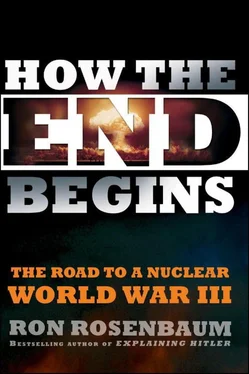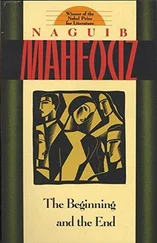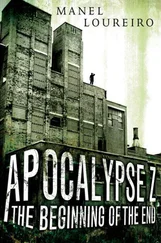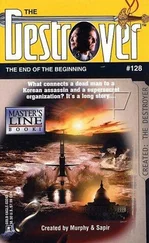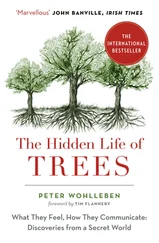It’s a Question of Last Resort. In War in Human Civilization, the historian and anthropologist Azar Gat argues that there is a dark self-destructive strain in human nature, perhaps a now-maladaptive residue of what originally was an evolutionary valuable aggressiveness. [78]
Political scientist Peter Berkowitz argues that the answer to how we ended up here, so close to hell, comes less from evolutionary psychology than from philosophy: “I sometimes think it’s Hobbes versus Rousseau,” some brutish nastiness built into us in a Hobbseian way, he told me. [79]
I have begun to wonder about the power of apocalyptic narratives contained in so many major religions. I don’t believe that any holy books were written by God. I don’t believe in a Freudian death instinct. But I do believe the fact that the hand of man finds itself recurrently, obsessively scripting fiery, self-immolating cataclysmic conclusions to the human saga may well be, at the very least, self-fulfilling prophecy. It may also say that deep down, we really are a species obsessed with its own self-destruction—one that knows it deserves to be cleansed from the world, by fire this time.
CHAPTER THREE
THE FORBIDDEN QUESTION AT THE QWEST CENTER
Happy Hour at the nuclear deterrence symposium at Omaha’s Qwest Center, July 2009. I’m having a drink with Hans Kristensen of the Federation of American Scientists.
“They’re scared,” he was telling me. [80]
They didn’t look scared to me, this massive convergence of the nuclear weapons elite. Not even nervous. Frankly I felt more than a little nervous having just asked a forbidden question of the U.S.’s chief nuclear commander, Kevin P. Chilton, four-star general and head of the U.S. Strategic Command that rules our nuclear weapons forces. A question about the morality of genocidal retaliation. He hadn’t looked scared. Puzzled maybe. (Who let this guy in?) But not scared.
But Kristensen—one of the foremost investigators of the secret innards of our nuclear war policies and co-author of an important new treatise on “minimal deterrence” that argues the world would be safer if the U.S. and the Russians could get their nukes down to less than a hundred—gazed at the heavily be-medaled crowd and concluded they collectively felt threatened by the new commander in chief’s declared goal of Zero. [81]Nukes and their minders who had once reigned serene and untroubled had suddenly been put on the defensive and forced to justify themselves. This massive convocation—despite its superficial air of optimism about the bright future of nuclear weapons—might be the equivalent of a show of force, the first act in a dramatic showdown over the future of these weapons.
Something about the STRATCOM nuclear convocation at the Qwest Center in Omaha recalled to me the Canterbury Tales pilgrimage. It’s true Chaucer’s was a pilgrimage of the (mainly) humble; there’s a knight but no four-star-general types among them. But in each case the goal of the pilgrimage was the veneration of numinously powerful shrines, cathedrals founded on faith whose spires soared to the heavens and whose power came from the invisible secrets of creation. The fact that these were all nuclear warriors in one capacity or another endowed them with a kind of transcendent purpose. They were the guardians.
And so it was that in the last days of July 2009, from all corners of the earth, the major players, the worldly powers of the nuclear weapons establishment, had made a pilgrimage, undertaken a mission, a quest to Omaha’s Qwest Center, the nearest gathering place to the shrine to our nuclear-tipped spires, the underground nuclear command center at nearby Offutt Air Force Base, beneath which was the cathedral of the Church of Nuclear Deterrence, the war room of our entire nuclear arsenal. The shrine of the faith-based doctrine it was built on: nuclear deterrence. It was a shrine that felt under siege by heretics, unbelievers. Besieged by Zero.
And so when STRATCOM—the United States Strategic Command, master of all America’s nuclear assets—summoned the nuclear elite to the First Annual Strategic Deterrence Symposium, to bolster the bunker against Zero, the nuclear priesthood booked their flights.
I did too. What impelled me to return to Omaha was a feeling of unfinished business.
THE DOOR THE LAUNCH KEYS UNLOCK
I’d first been there at the height of the Cold War. I’d been driven out to Offutt Air Force Base, then taken down far beneath the blast-proof super-hardened surface to the underground war room of the Strategic Air Command, the key node of U.S. nuclear war fighting.
Through a series of radiation-proof, sealed, and double-locked chambers I’d been ushered out onto the “Command Balcony” of the SAC war room. It was there that the general then in charge of the Strategic Air Command, in charge of all our nuclear-armed bombers and land-based missiles, would receive, on the so-called Gold Phone, the order, direct from the president, to launch a nuclear attack. After that, the SAC commander would pick up the Red Phone to convey the coded orders to the bomber pilots who would take to the air, and to the missile crewmen who would twist the launch keys in their slots and thereby execute whatever their targeting plan was. Execute—within less than an hour—tens, perhaps hundreds of millions of unarmed human beings on the other side of the planet.
The Command Balcony in the Omaha war room was the first stop on a strange and memorable odyssey that would end with my holding launch keys in my hand and twisting them—hard right for two full seconds—in test console slots so I could see how it felt, physically at least, to send thermonuclear death by the millions rocketing toward its victims.
It all started with the Major Hering story. It disappeared from the press, but for nearly a year I couldn’t get it out of my mind and I persuaded Lewis Lapham at Harper’s to assign me a piece about the case, the Larger Sanity question it raised, and the questions about command and control of the nuclear trigger.
Back then, the first thing I’d done was travel down to Washington and spent weeks immersing myself in the voluminous and disturbing transcripts of the congressional hearings on the nuclear command and control system, with particular emphasis on Professor Quester’s questions about the system’s flaws. Then I crossed the Key Bridge from Washington to the Pentagon where I presented many pages of scrawled questions to a gung ho Air Force information officer who—to my surprise—took them seriously and decided that the best way to reassure me about the efficacy and safety of the nuclear command and control system was to authorize access for me to the key nodes of its operation.
They let me take a seat in the “battle chair” on the Command Balcony that overlooked the theater-size radar and satellite screens of the war room, darkened for security reasons while I was there. [82](Omaha’s Command Balcony has been the primal scene of so many nuke porn movies. Larry Lasker, who co-wrote the movie WarGames, told me they had based their scene there on my account of my visit. Though it’s been mainly off limits to the press since 9/11, it still has an iconic presence: a Hollywood simulacrum of the Command Balcony made an appearance—Red Phone and all—in the 2010 Angelina Jolie thriller Salt whose climax was the attempt to start a nuclear war.) They let me pick up the Gold Phone and the Red Phone on the console in front of the battle chair, miming the act of ordering nuclear war, though hearing only a blank hum on the lines. They took me up into the “Looking Glass Plane,” the airborne emergency nuclear war command post for the (presumably) evacuated president, from which he would direct the remains of our arsenal at the remains of our nuke-struck foe. They let me go down into the hollowed-out core of Cheyenne Mountain in Colorado, the Early Warning Center that would be the first to alert Omaha of an incoming nuclear attack, an alert that would then light up the president’s “nuclear football.” And then I was permitted to descend deep beneath the frozen prairie of the Great Plains to a Minuteman missile launch control center where two crew members in charge of some fifty thermonuclear ICBMs awaited the Armageddon order. And, finally, at another missile base I got to hold and twist the launch keys, the objective correlatives of the apocalypse.
Читать дальше
